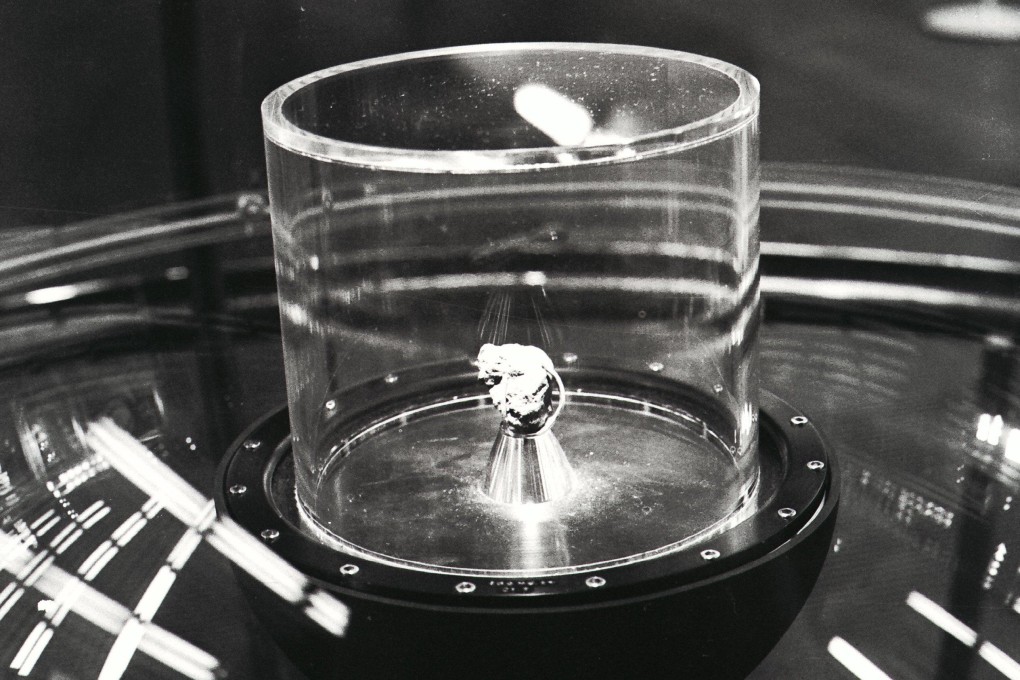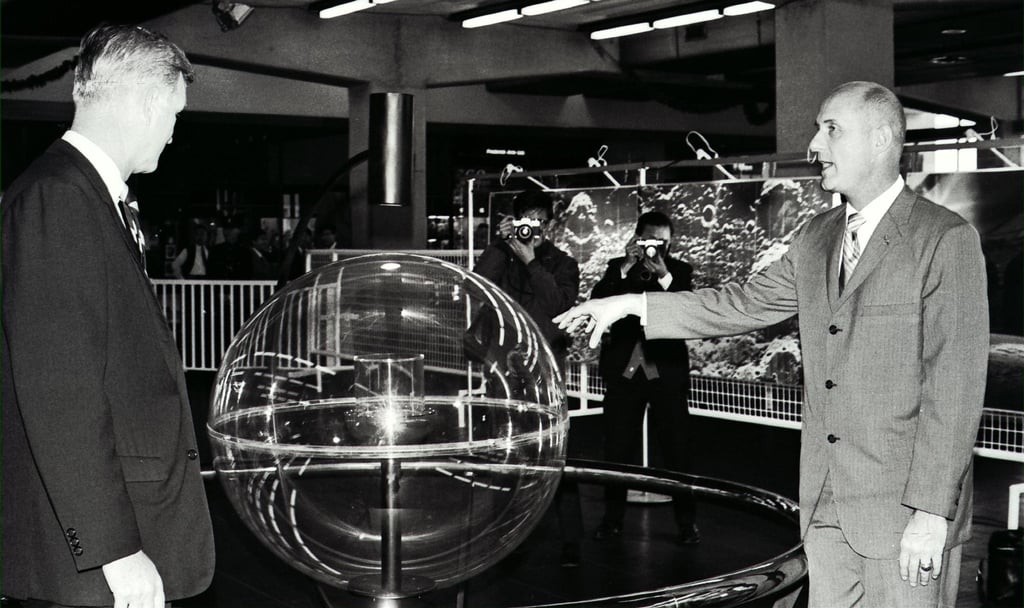When moon rock found by Apollo 11 astronauts arrived in Hong Kong, in 1970 – and nearly 250,000 people turned out to see it
- A lunar rock sample brought back by the crew of Nasa spacecraft Apollo 11 in 1969 went on display in Hong Kong’s Ocean Terminal the following year
- The Post reported police led people in groups ‘down the long rope barriers towards the rock’; pre-recorded descriptions of it were in English and Cantonese

“The specimen will be set on a three-pronged stainless-steel mounting sealed in a transparent plastic hemisphere filled with nitrogen. This will simulate the oxygen-free moon environment and prevent any change or erosion by oxidation.
In another Post article that day, Oliver Schaeffer, a professor at the State University of New York, was quoted as saying that “these rocks are almost as old as the universe itself, which is estimated to have been formed 4,700 million years ago. Earth’s oldest rocks are about 3,300 million years old.”

The report continued, “The moon will be a natural laboratory in which to study clues to the birth, age and evolution of Earth and the other planets of the solar system; and it could give insights into the evolution of the universe itself.”